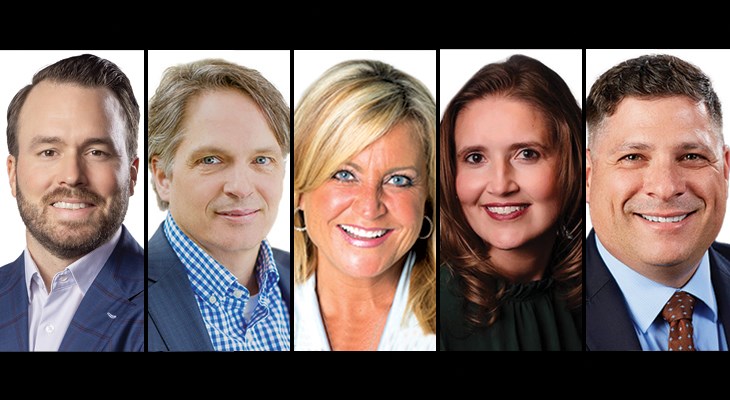On the heels of the Intel announcement that created much buzz in Central Ohio, Chris Michael a partner at Ice Miller LLP, led the kickoff panel at the Columbus Smart Business Dealmakers Conference that discussed how the middle-market business structure and economic climate in the region enabled it to attract interest from such a major company, as well as others.
"We've seen a lot of implementation of that buzz that was generated by Intel, amongst other things, last year," Michael says. "And not just in Central Ohio, or Columbus. northeast up in New Albany and the adjacent communities, but Delaware, Dublin, Grove City, Obetz, the list goes on. It's not just one area of Central Ohio."
Jennifer Kerestan, Chief Clinical Officer at MedVet, says part of the reason the company has had success in Central Ohio over the past 35 years is in part because of the brand recognition "because we've been here so long and have a reputation and build a lot of relationships in the community."
But as the company looks at how and where it grows — in Ohio and across the country — she says there are certain components about Central Ohio that really stand apart and what it looks to model after in other communities where the company has a presence.
"One of those being the secondary education systems," Kerestan says. "Ohio State's veterinary medicine program is consistently one of the top in the country. And that produces veterinarians that help us grow as MedVet and come and join us. But as well, a lot of them stay in the area and become our referral partners. We are an extension of family practice veterinarians. And so having that system, that secondary education system of growth, as well as having schools like Columbus State who are training our credentialed technicians that are really critical to running, whether it's general practice or specialty and emergency veterinary spaces."
Another positive is the population of Columbus has been growing, which has afforded the company more clients and more pets. But that growth has also been at a level of wealth that can afford the company's services — can afford to do the wellness of their pet as well as take care of them when there's an emergency or a complicated disease.
A third factor the company looks at is around legislation. She says Ohio defines what veterinarians and credential technicians can and cannot do. Not all states have that specific legislation in place, which she says makes it harder to find doctors and team members.
Joelle Brock, co-founder, president and CEO of Leading EDJE says what is attractive to her firm is its culture, and their culture represents Central Ohio.
"We don't handshake, we hug," Brock says. "We are concerned about people's career development from the time they join our firm. Our third largest expense in out P&L is internal training and education — third to, obviously, salary administration and benefits administration. And that's because we want to develop our team members to be exclusive. And that's the reputation that we've had is that if you join our team, you're going to be invested in for the long term. And again, it's just, that's what Central Ohio is. Just warm, welcoming, very collaborative, whether you're a client or a competitor, it's just a very collaborative culture. And to build a company that is representative of the market that we're in has just been really easy point of entry. So, it's great because we're attracting really good technical talent from across the country to Central Ohio. It's a great place to say, this is where we are from, this is where we've grown, this is where we continue to grow and we can't wait to look to the future to be in Central Ohio."
Kris Anderson, managing principal at Hackman Capital Partners says over the past 25 years, Columbus has grown into a leading city in the Midwest.
"And as I think of private equity, you look for investment theses and inflection points that you get behind," Anderson says. "What's happening with Intel is a great example, and all that JobsOhio is driving for growth in Ohio. We're talking about reshoring, and nearshoring. All those things matter now. And as geopolitical issues become more acute, people are going towards where the manufacturing history has been in the United States. And that's the Midwest and the Northeast, in my opinion."
The region has strength in part because of its traditional, proven training bases, its insulation from many climate-related issues, and an investment base that is consistent.
"This area — Columbus, Midwest, Northeast — is primed for tremendous amount of growth over the next 10 years," he says.
Matthew McCollister, executive vice president of One Columbus says the area's talent, education system and population growth are going to drive potential investment.
"There's a lot of different sectors that we're looking at now that are going to be the future of our region," McCollister says. "Five years ago, if I was sitting on the stage, I'd probably be talking about logistics and warehousing, back office, those sorts of sectors, probably not mentioning much about manufacturing. But today, a large portion of our portfolio is manufacturing — 58 percent of all the projects we're working on right now are manufacturing in nature, 8 percent are office. And so, I think that our future is very bright. And it's a new future for us. It's going to be based on semiconductor, it's going to be based on pharmaceutical production, it's going to be based on cloud computing — Amazon announced $8.7 billion investment about two, three months ago; Google just announced $1 billion in our market two weeks ago. These are the sectors that are the future for us. And I think that with AI coming it's going to change the landscape of cloud computing. And we're just going to continue to see that sector grow as well."




